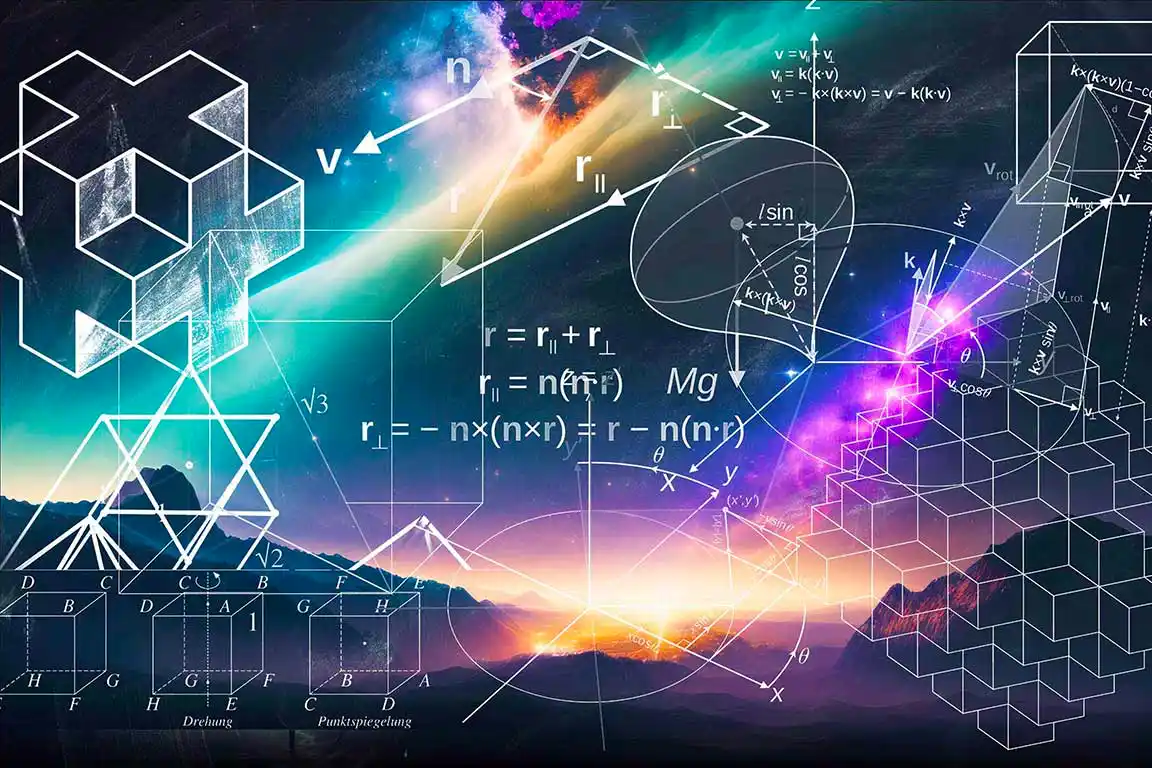©2023 KHRISTRON, ALL RIGHT RESERVE

By Khristron.com
Scalar and vectors are important concepts in mathematics, physics, and engineering. They have an interesting relationship. In short, scalars are quantities that represent magnitude with no direction like energy and mass; while vectors are quantities that represent a magnitude with direction, such as force, momentum and velocity.
Scalar are numbers that represent the magnitude of a quantity, such as mass, temperature, or speed. These numbers are usually expressed in standard units of measure, such as kilograms, degrees Celsius, or kilometers per hour. Scalars are usually written without direction, so they can represent a positive or a negative value. For example, a scalar of -2 could represent a decrease in temperature by two degrees Celsius, or an increase by two degrees Celsius.
Vectors, on the other hand, are numbers that represent both magnitude and direction. Vectors can be written as arrows, with the length of the arrow representing the magnitude of the vector and the direction of the arrow representing, the direction of the vector. For example, a vector of 3 meters North, would be written as an arrow pointing north, with a length of three meters.
The relationship between scalars and vectors is that vectors can be broken down into two components: magnitude and direction. The magnitude component is a scalar, and the direction component is a unit vector. This means that any vector can be expressed as a scalar multiplied by a unit vector. This is an important concept in mathematics, physics, and engineering, and is used to solve a wide variety of problems.
A matrix is a mathematical tool used to represent to manipulate physical and spatial information. A scalar is a single value or quantity, a vector is a line or set of numbers that represent a direction or magnitude, and a matrix is an array of numbers arranged in rows and columns.
The most basic matrix is a 2×2 matrix, which has two rows and two columns. Each row and column contains four elements that can be represented as a single number or vector. This matrix is often used to represent a physical system, such as a force or a velocity. For example, a 2×2 matrix can be used to represent the displacement of an object over time, with each element representing a different direction and magnitude.
A matrix can also be used to represent more complex systems. A 3×3 matrix, for example, can represent a 3-dimensional system, such as a volume or a surface area. Each element in the matrix can represent a different direction and magnitude in three-dimensional space.
A tensor matrix is a type of matrix that is used to represent multidimensional data. They are used in many different areas of mathematics and physics, including linear algebra, differential equations, and quantum mechanics.
Tensors are typically represented as arrays of numbers and can be thought of as a generalization of the concept of a matrix. A tensor matrix is a matrix that has multiple dimensions. Each dimension can have a different size and each element in the matrix can represent different types of information.
Rank 0 Tensor Matrix: A rank 0 tensor matrix is a single value. It is a scalar and has no dimensions.
Rank 1 Tensor Matrix: A rank 1 tensor matrix is a vector. It has one dimension and can represent a vector of numbers, a sequence of characters, or a series of points in space.
Rank 2 Tensor Matrix: A rank 2 tensor matrix is a matrix. It has two dimensions and can represent a table of numbers, a set of images, or a set of points in space.
Rank 3 Tensor Matrix: A rank 3 tensor matrix is a cube. It has three dimensions and can represent a three-dimensional array of numbers, a set of data cubes, or a set of points in three-dimensional space.
Rank 4 Tensor Matrix: A rank 4 tensor matrix is a higher-dimensional array. It has four or more dimensions and can represent a four-dimensional array of numbers, a set of data cubes, or a set of points in four-dimensional space.
In addition to representing physical systems, vector matrices can also be used to solve mathematical problems. For example, the elements of a matrix can be used to solve equations, or to find the inverse of a matrix, equations, or calculate derivatives.
In conclusion, scalars, vectors and matrices are used extensively in physics, engineering, and computer science. They are used to represent and manipulate physical and spatial information, and to solve complex mathematical problems. With the help of tensor matrices scientists and engineers can better understand and control physical systems, and solve difficult problems.
©2023 KHRISTRON, ALL RIGHT RESERVE
You cannot copy content of this page